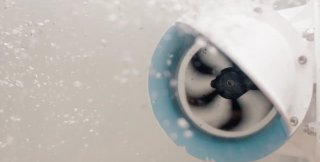How to reduce noise from your bow thruster
Does your bow thruster make a lot of noise? Whether there's been a lot of noise from the day it was installed, or if the noise level has evolved over time, there are ways to fix this.
Minimizing vibration and noise from the hull during installation
To reduce the noise caused by a bow- or stern thruster on a boat, it is important to consider the boat's structure. Every boat has a specific frequency at which it resonates, which can either make the noise louder or quieter. The noise that travels through the boat's structure is called "structure-borne noise."
One way to reduce this type of noise is to install the thruster in a way that minimizes vibration and noise from the hull. This could include reinforcing and strengthening the boat's inner liner, which can act like a loudspeaker and amplify the noise. Your installer may be able to take steps to isolate the transfer of noise and vibration, which can help reduce the overall noise level.
Reduce cavitation
To reduce cavitation, choosing the largest tunnel diameter that can fit in your boat is a good idea. Using a larger diameter tunnel can increase the efficiency of thrust and create a more open area for water flow, which can reduce noise.
Additionally, smoothing off the edges of the tunnel ends where they meet the hull can help reduce turbulence and cavitation caused by the propellers. This can also increase the efficiency of thrust and reduce noise.
There's a helpful video below that demonstrates this concept:

Consider switching to a low-noise propeller
Check if any new composite low-noise propellers are available that can be retrofitted to your thruster brand. The noise frequency of a typical installation is usually caused by the design of the propeller tips, so improving this can make a significant difference.
The best low-noise propellers have five blades and a "skew" blade profile that creates fewer noise peaks by slicing through the water with a longer leading edge than traditional propeller designs.
Low RPM (revolutions per minute) generally results in low noise due to basic physics. Therefore, it's better to over-specify power and use it with a good speed control system to help reduce noise.
Upgrade to PRO™ speed control
Gradually adding thrust with variable speed control means that you can smoothly apply power to your boat's thrusters, allowing you to position your boat precisely in any mooring situation. By using the right amount of thrust on a low-power setting with a powerful thruster and variable speed control, it's possible to make the thruster almost undetectable to the human ear.
With just a few thoughtful upgrades and adjustments, you can significantly reduce noise from your boat's thrusters and gain greater confidence, control, and enjoyment in your boating experiences.
We hope this article has provided you with some helpful tips and tricks to achieve a quieter and more enjoyable boating experience.

